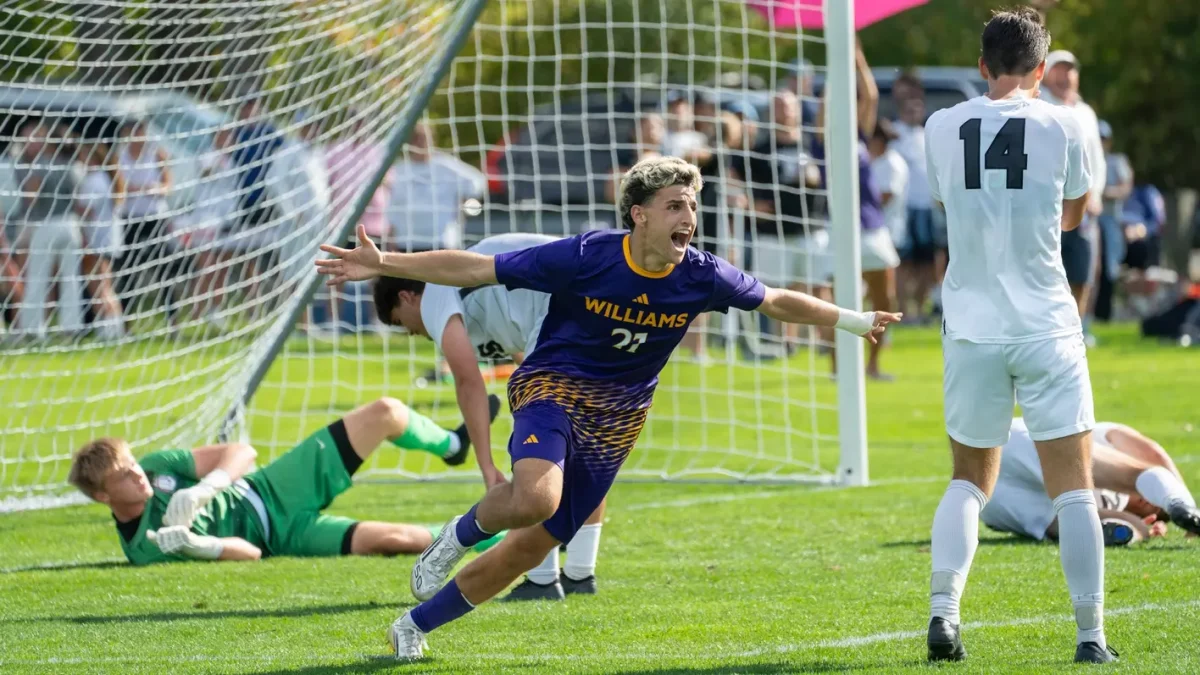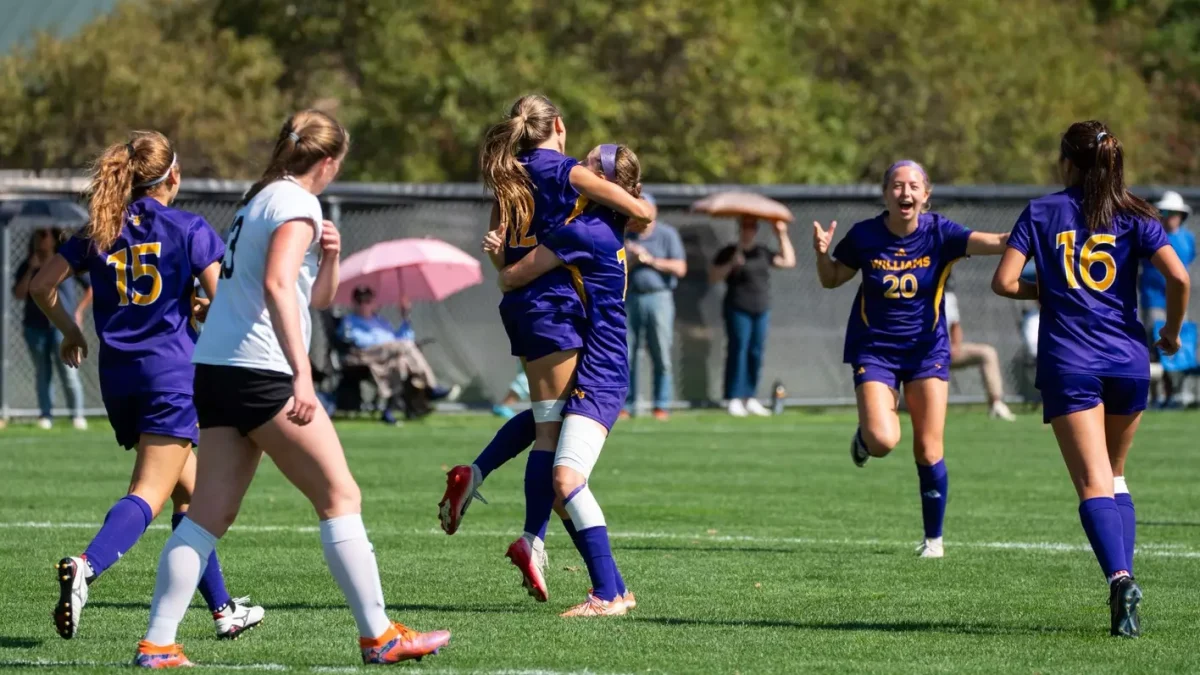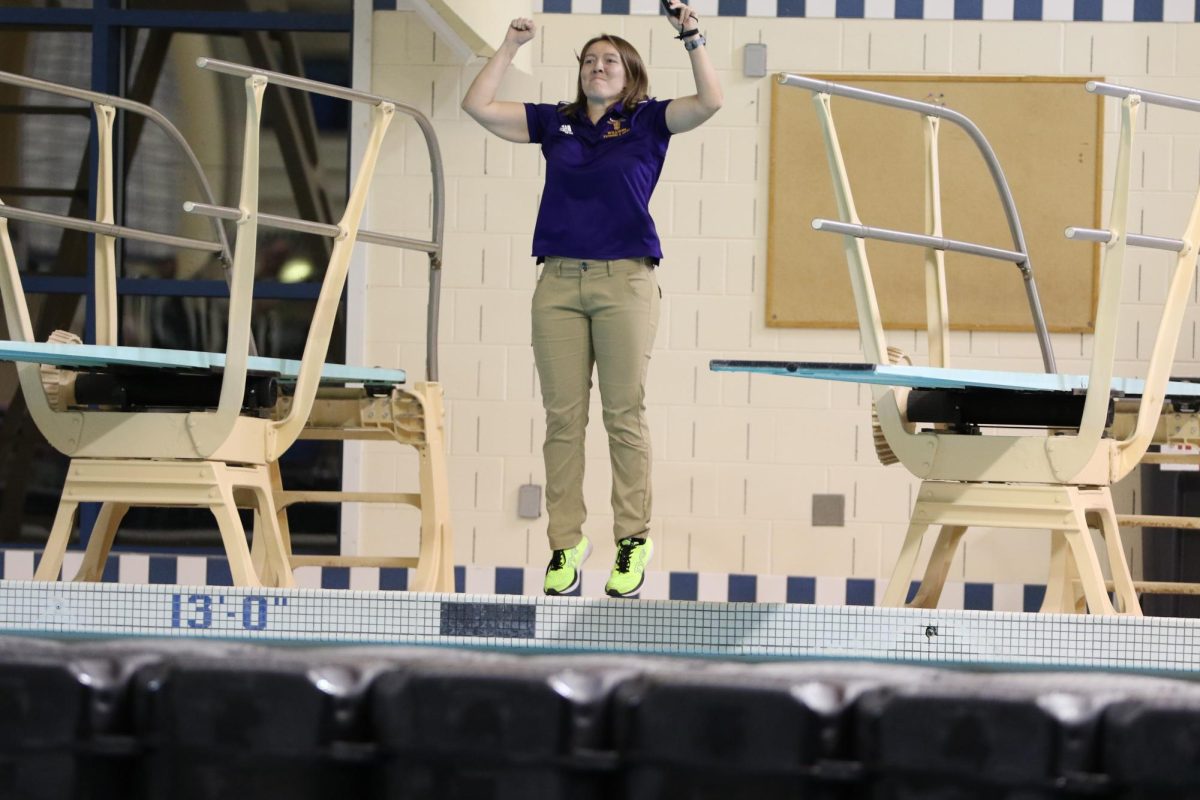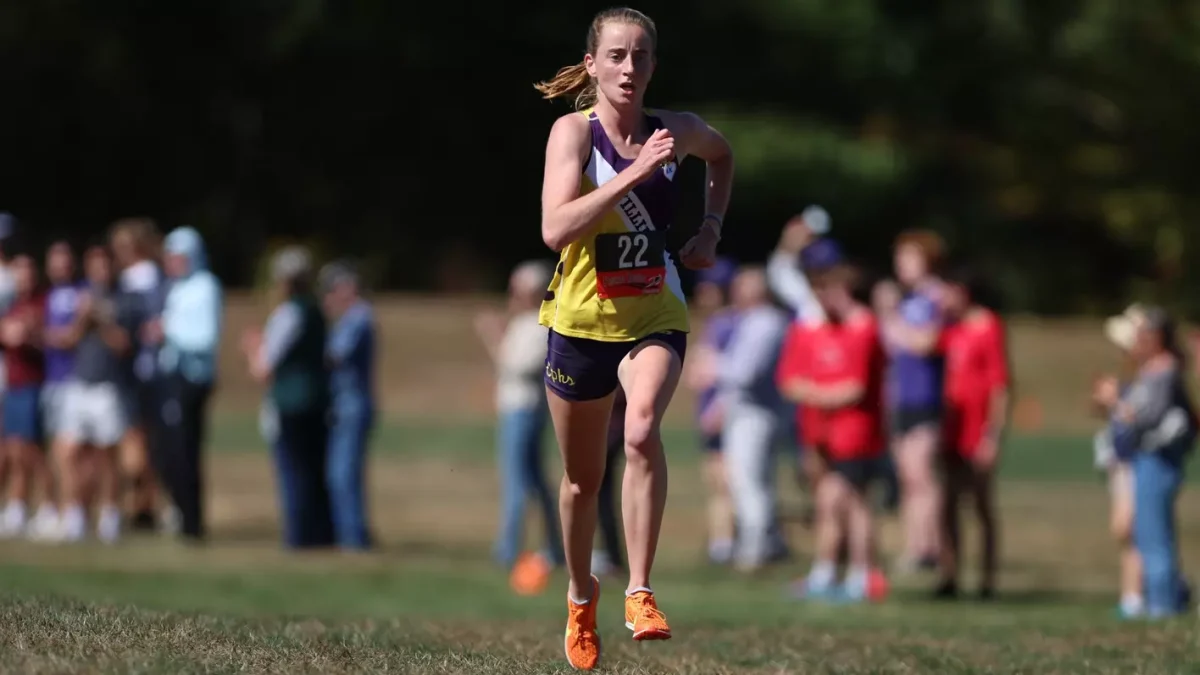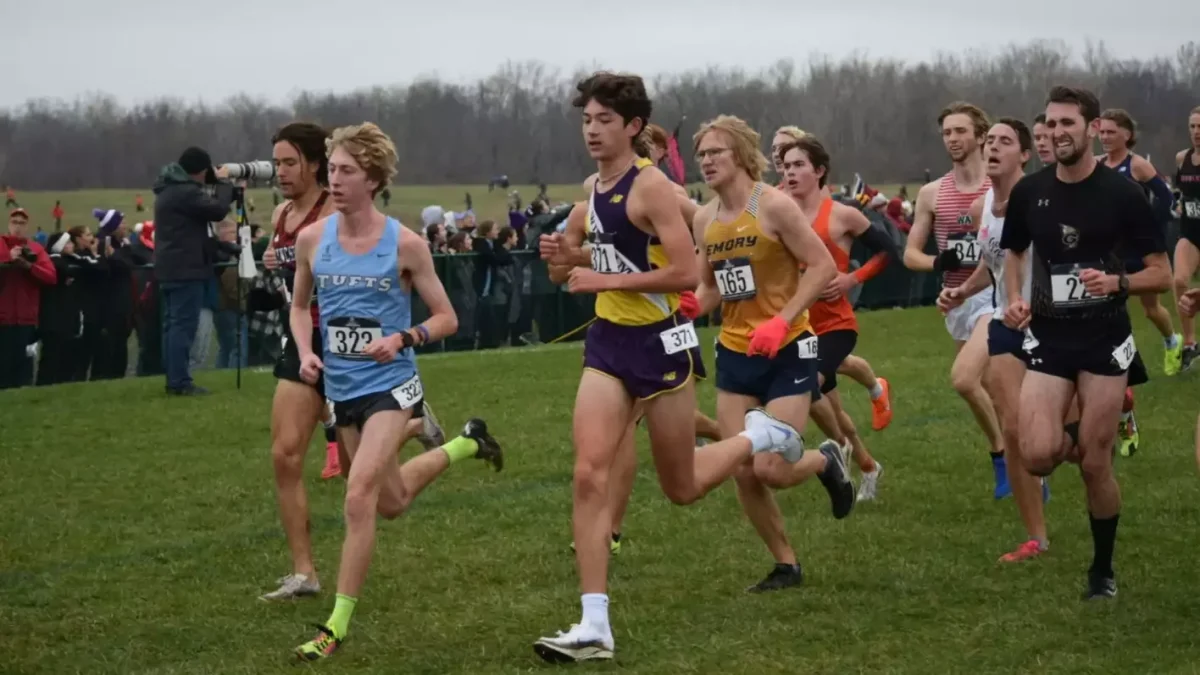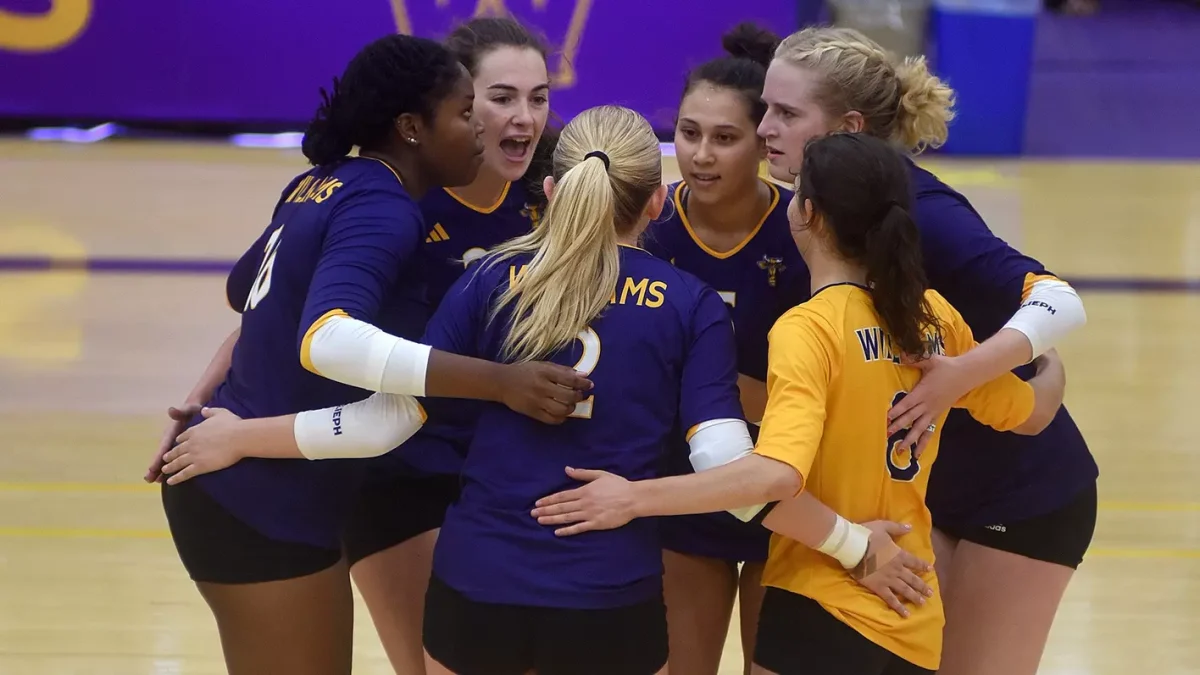Strava, FaceTime, Skype, jogging, bodyweight. The College’s athletes are keeping up team dynamics and staying fit during the pandemic over social media and with modified workouts.
The impact that the COVID-19 shutdown brought upon teams—especially seniors who were looking forward to competing in the spring for the last time—was significant. For many student-athletes, their sport had become an essential aspect of their lifestyle, their team had become a supportive family and their workout had taken on more significance than simply staying in shape.
For Kenneth Marshall ’20, one of the men’s cross country captains, training is a reminder of normal life and a steady force in these uncertain times.
“Ever since we received the news that Williams would close last month, we and our teammates have largely stood by our training, both because we love doing it and because it has given us a unique bit of structure and stress relief in our uncertain and at times anxiety inducing days,” he wrote in an email to the Record.
For him, weekly training continued just like usual, the only difference being the training ground. During spring break, Marshall shared a residence with a co-captain and two teammates. Living together with members of the team gave Marshall “a unique opportunity to carry on training largely as we would have had our outdoor track season continued.”
“We runners have adhered to the amount of running we normally do at Williams, and have exceeded that on some occasions thanks to the extra sleep we’ve been getting,” Marshall said. He and his teammates have been sticking to weekly plans sent out by their coaches.
Marshall and his teammates live with some rowers and CrossFit enthusiasts.
“We have accommodated some of their training into our own since we are not preparing for a competition in the near future,” Marshall said.
The track team members aren’t the only ones who have been running through the spring. Exercises that do not require equipment or specialized facilities have grown in popularity among other athletes as well.
Andrew Trunsky ’20 said he and his teammates on the men’s swimming and diving team have been running and biking to stay in shape because they do not have access to pools.
Not only is jogging accessible, but it is also relatively safe. “I’ve been running on my own while ensuring that I keep distance between myself and anyone I pass by,” said Hannah Lebowitz ’20, who served as co-captain on the women’s cross country team. “Thankfully, running is pretty conducive to social distancing.”
Another safe option is working out at home, which Daiana Takashima ’20 has taken full advantage of. Having recently left the women’s volleyball team this past fall and now unable to play with her club team because of the pandemic, she is seeking new ways to stay fit: running once a week, doing bodyweight fitness workouts “from an eBook I bought from this one health/fitness figure I found from social media that I really like!” She wrote in an email to the Record. “My sister (who is in [New York City]) and I (currently in [California]) do them together virtually, so it’s nice to have someone to keep me accountable.”
In lieu of volleyball scrimmages or practicing on a court, Takashima has been working on her overall power. “[T]here are a lot of movements like jump squats and agility workouts you could do in your backyard that would help translate into explosiveness and power when playing, so I have been doing a lot of that,” she wrote.
This, of course, will not replace playing volleyball or the people she plays it with. “Once this is all over, I would love to go back to my old club and play with them again, as I have been doing whenever I’m usually home,” she wrote.
Winter sports, such as skiing, depend heavily on snow availability. Fortunately, Nordic ski co-captain Jack Consenstein ’20, who is from Alaska, as well as some of his teammates, still enjoy access to snow and have been skiing since school closed. “It’s a nice way to get out in nature and explore while also not going insane being cooped up inside.” He wrote, “The ones who have [no access to snow] have still been able to rollerski, perhaps even easier now since there are less cars on the road.”
With guidance on how best to stay fit from their coaches, the crew team has had to adapt to not having access to boats. “While we obviously cannot train on the water, we have been provided with workouts for the erg machine. For people without access to ergs, running, biking, and bodyweight adaptations can be made.” co-captain of women’s crew Samantha Lazar ’21 wrote in an email.
Cross country coaches have been flexible, according to Brianna Bourne ’21, a junior co-captain for women’s cross country. “[Coaches] understand if we can’t follow the training schedule perfectly (or maybe even at all!) given the circumstances, … but everyone on the team knows that consistency is key and this chunk of the spring is a helpful time for anyone to put in the work and become a better runner,” Bourne wrote in an email. “And it’s definitely nice that it’s something that we’re allowed to do within the stay-at-home orders!”
Other athletes also find good company and encouragement to staying in shape by staying in touch with their team. Women’s golf, for example, relies on Skype video calls to complete home workouts together, according to captain Cindy Wang ’20.
By sharing workouts and encouraging each other remotely, Ephs turn hard work into challenges that they will not have to take on alone. Women’s ice hockey, for example, will start lifting using Head Strength and Conditioning Coach Rob Livingstone’s workout packet, according to co-captain Meghan Halloran ’21. “We decided to pair everyone with a buddy so that each player has someone they will FaceTime with while they lift,” She wrote. The team will be doing weekly challenges such as a shooting accuracy challenge and fun stick handling challenges, splitting into two groups which will then “compete” remotely.
Teams have also taken measures to make sure that athletes stay mentally healthy on top of physically fit. Women’s tennis captain Chloe Henderson ’20 wrote that, along with connecting over Snapchat and GroupMe, “Each individual has sat down with the coaches to set fitness and mental toughness goals during this time,” she wrote. “Our coach also sends out short journal prompts each week to share with small groups that she assigns for that week.”
Online accountability through Strava has been key in maintaining motivation for cross country. “This is obviously a tough time for the team, because we’re in it alone when it comes to getting out the door and going for a run, but we’re definitely grateful for these ways of staying in touch that remind us that we’re in this together and that keeps us all motivated for what’s to come.”



